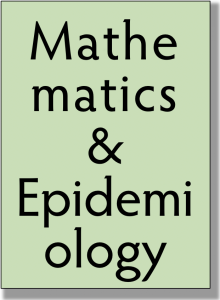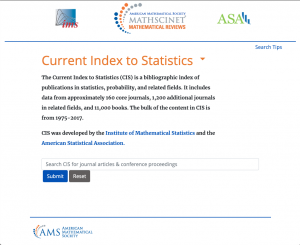 On May 20 at 2pm Eastern, Bianca Viray and Drew Sutherland will be moderating a panel discussion on hosting mathematics events online. The panelists are all mathematicians who have recently organized online workshops or conferences. Their hope is that the discussion will allow those who are planning future online events to benefit from the panelists’ experience. You can find more details here. Continue reading
On May 20 at 2pm Eastern, Bianca Viray and Drew Sutherland will be moderating a panel discussion on hosting mathematics events online. The panelists are all mathematicians who have recently organized online workshops or conferences. Their hope is that the discussion will allow those who are planning future online events to benefit from the panelists’ experience. You can find more details here. Continue reading
-
Opinions expressed on these pages were the views of the writers and did not necessarily reflect the views and opinions of the American Mathematical Society.
-
Recent Posts
Categories
- Anniversaries
- Announcements
- Conferences
- Data on publishing
- Exceptional reviews
- Extra content
- General information
- History of Mathematical Reviews
- Jobs
- Math on the web
- Mathematicians
- Mathematics in the news
- MathOverflow
- New features
- Prizes and awards
- Reviewers
- Short posts
- Tips and Tricks
- Uncategorized
Archives
- December 2021
- November 2021
- October 2021
- September 2021
- August 2021
- July 2021
- June 2021
- May 2021
- April 2021
- March 2021
- January 2021
- December 2020
- October 2020
- September 2020
- August 2020
- June 2020
- May 2020
- April 2020
- March 2020
- February 2020
- January 2020
- September 2019
- August 2019
- July 2019
- June 2019
- May 2019
- April 2019
- March 2019
- February 2019
- January 2019
- December 2018
- November 2018
- October 2018
- July 2018
- May 2018
- April 2018
- March 2018
- February 2018
- January 2018
- December 2017
- November 2017
- October 2017
- September 2017
- July 2017
- March 2017
- January 2017
- December 2016
- November 2016
- October 2016
- September 2016
- August 2016
- July 2016
- June 2016
- May 2016
- April 2016
- March 2016
- February 2016
- January 2016
- December 2015
- November 2015
- October 2015
- September 2015
- July 2015
- June 2015
- May 2015
- April 2015

 There is a three-minute video about MathSciNet now available online on
There is a three-minute video about MathSciNet now available online on  Hillel Furstenberg
Hillel Furstenberg Mathematics is a useful tool in studying the growth of infections in a population, such as what occurs in epidemics. A simple model is given by a first-order differential equation, the logistic equation, $\frac{dx}{dy}=\beta x(1-x)$ which is discussed in almost any textbook on differential equations. It can be found, for instance, in Chapter 2 of Boyce and DiPrima’s book Elementary Differential Equations and Boundary Value Problems. (See
Mathematics is a useful tool in studying the growth of infections in a population, such as what occurs in epidemics. A simple model is given by a first-order differential equation, the logistic equation, $\frac{dx}{dy}=\beta x(1-x)$ which is discussed in almost any textbook on differential equations. It can be found, for instance, in Chapter 2 of Boyce and DiPrima’s book Elementary Differential Equations and Boundary Value Problems. (See  The Current Index to Statistics (CIS) is now hosted by the
The Current Index to Statistics (CIS) is now hosted by the 
